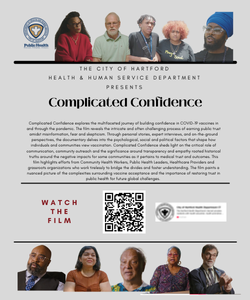By Aziah Siid
Hailed as the hot new education technology that can do everything from helping teachers reverse COVID-era learning loss to helping administrators identify which students are at risk of dropping out, artificial intelligence education programs seem like a godsend for resource-poor K-12 public schools.
But experts warn educators that A.I. is a flawed, often racially-biased tool that — if not used carefully in the classroom, or better designed in Silicon Valley — could hurt Black students just as easily as it could help them.
That’s because multiple studies have shown artificial intelligence-based education software often contain hidden, built-in biases that can amplify nagging inequalities between Black and white students that are already difficult to correct.
With 1 in 4 teachers planning to increase their use of A.I.-powered tools in their classroom, experts say, it’s critical that school administrators ensure that the software is as race-conscious and equitable as possible.
“Bias, discrimination, and inequities – they become part of and working through technology,” says Ezekiel Dixon-Roman, an education professor and researcher at Columbia University Teachers College in New York City. That’s because machine-learning software is typically produced by computer engineers in a predominantly-white industry, and usually doesn’t account for racial inequality or the legacy of past discrimination.
“The minute you have a lack of representation in the training data – we know whether it’s from predictive policing, facial recognition, or even in the context of educational technology platforms – the technologies don’t function well. They wind up producing biased outcomes.”
Teacher’s (and Student’s) Helper
So far, artificial tutoring, grading, classroom behavior management, and other A.I. tools have been implemented in school districts – some successful in not having biased outcomes, some not so much.
“Personalized learning may be most impactful for low-income students and students of color, particularly because these students were disproportionately impacted by learning loss due to COVID-19, resulting in a widening of academic achievement gaps,” according to a June post published in the Stanford University Center for Racial Justice blog. “AI can be used to reduce the harmful impacts of these disparities by personalizing learning based on students’ needs,” including lessons in math, grammar and other subjects.
Yet while these tools are intended to assist educators in improving outcomes for students, “predictive analytics often rate racial minorities as less likely to succeed academically,” according to the essay. “This is because race is included as a risk factor in the algorithms and treated as an indicator of success or failure based on the historical performance of students with those identities.”
Put simply, A.I. programs, trained on historical data, could mistakenly identify a Black student as underperforming, a behavior problem or likely to drop out.
Dixon says part of the issue is the racial makeup of the people writing the code.
In the United States, Black people only make up 7% of the computing workforce, the majority of whom are not in high-ranking, decision-making positions at big tech companies.
Dixon-Roman believes although a lot of work has to be done, it’s not too late to keep racism out of AI in classrooms.
It Starts at Black Representation in Tech
“This is a long-standing issue. It’s interesting because you’ll see statistics that point to the disproportion of people of color, especially Black folk who are in tech, and that doesn’t even account for the fact that many of them might be working in marketing or in IT, but they’re not in fact the technology designers,” he says.
Diversifying the tech workforce, can have a direct impact on algorithms put in place that may potentially curb or include racist outcomes when put to use in K-12 classrooms.
“It really depends on not just the application, but the context and the population which it’s going to be deployed on and with, right?” Dixon-Roman tells Word In Black. “The training data has to be thought of very carefully and thoughtfully, but especially in relation to context and its relevance.”
Creating Policies and Guidelines on AI
Policymakers, tech grassroots, and major organizations believe there should be guidance for educators as the fairly new advancements spread to all school districts.
The American Federation of Teachers, a 1.7 million-member teachers’ union, launched a comprehensive guide for educators to help assist them with grasping onto the use of AI in education. The task force focused on six core values – safety and privacy, promoting human interaction and individuality, empowering educators to make educational decisions, advancing equity and fairness, advancing democracy, and teaching digital citizenship and balance.
In addition to the guardrails, AFT is investing $200,000 to 11 districts in support of having a proposed wide range of practices, like creating AI summits to “understand and establish guidelines, providing hands-on training for educators, and establishing workshops, panels and community events,” according to the AFT.
This article was originally published in Word In Black.





